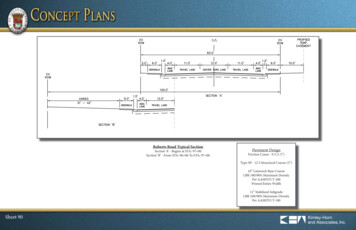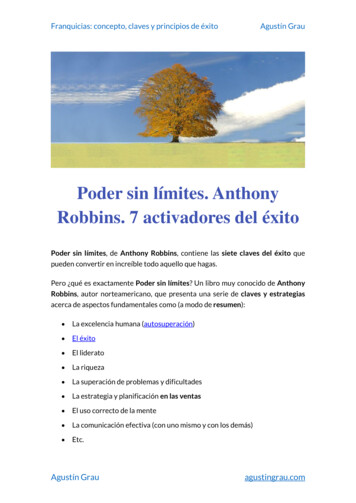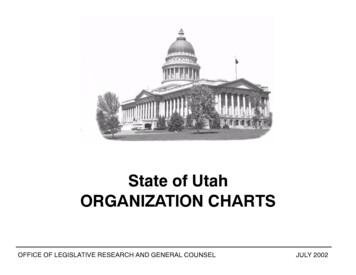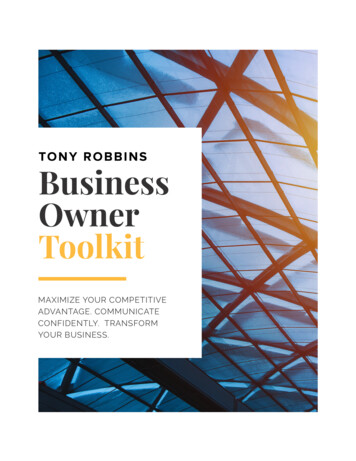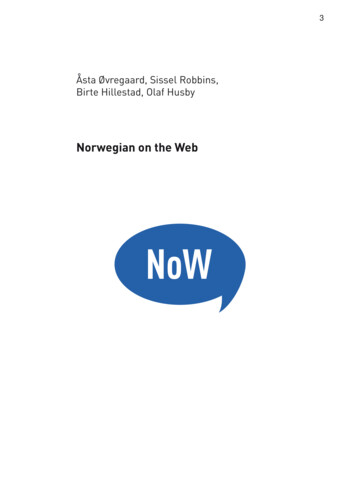
Transcription
3Åsta Øvregaard, Sissel Robbins,Birte Hillestad, Olaf HusbyNorwegian on the Web
42011 Åsta Øvregaard, Sissel Robbins, Birte Hillestad, Olaf HusbyTrykk: NTNU-trykk, Trondheim
5Norwegian on the Web - NoWWhat kind of course?NoW is an online course in Norwegian at entry level, where all the teaching aids areintegrated on a website, free of charge. NOW is developed at Norwegian University ofScience and Technology, NTNU, by experienced teachers.For whom?NoW is open to all who want to learn Norwegian. The course is also specially designed forforeign students studying at NTNU. The latter can get a wider range of services withclassroom instruction. As a student at NTNU, you can apply for admission to the classroomcourses and access to exams. NTNU offers Norwegian language courses at several levels,from entry to advanced level. Some beginner courses are offered in conjunction with NoW,others use different teaching aids. Read more on http://www.ntnu.edu/norwegiancourseWhere?You will find Norwegian on the Web at http://www.ntnu.edu/now/introWhat will you learn?Part 1 (chapter 1-6) leads to knowledge equivalent to level A1 of the Common EuropeanFramework of Reference for Languages: Learning, Teaching, Assessment (CEFR)1. Part 2(chapter 7-10) leads to skills at level A2.After completing the A1 level the students should understand and be able to use familiareveryday expressions and very basic phrases aimed at the satisfaction of needs of a concretetype. The students should be able to introduce themselves and others and to ask and reply toquestions about personal details such as where they live, people they know and things theyhave. The learners are supposed to be able to interact in a simple way provided people talkslowly and clearly and are prepared to help.After completing the A2 level the students should understand sentences and frequently usedexpressions related to areas of most immediate relevance (e.g. very basic personal and familyinformation, shopping, local geography, employment). The students should be able tocommunicate in simple and routine tasks requiring a simple and direct exchange ofinformation on familiar and routine matters. The learners are supposed to be able to describein simple terms aspects of their background, immediate environment and matters in areas ofimmediate need.1http://www.coe.int/t/dg4/linguistic/CADRE EN.asp
6ContentThe course consists of texts, images, audio files, short films, podcasts, dictionaries, grammar,interactive exercises, and guidance on pronunciation training, all available on the website.TextsThe texts follow four foreign students who travel to Trondheim, establishing themselves there(Chapter 1-6) and starting as students at NTNU (Chapters 7-10). Each chapter in Part 1 hasthus four main texts that follow the four persons, while Part 2 has a more free structure. Eachchapter is supplemented with the following sections:GrammarEach chapter deals with specific grammatical subjects, but in a simple notion that does notrequire any advanced knowledge of grammar. There is also a larger overall presentation of theNorwegian grammar in second language perspective.PronunciationThis section contains brief descriptions of the focused topics related to the pronunciation ofNorwegian. It also addresses the relationship between written and spoken Norwegian. A moredetailed presentation is given in the larger overall presentation of the Norwegian grammar.Listening exercisesHere you will find exercises related to listening and pronunciation.VocabularyThis section provides information on systematic vocabulary: inflected forms, pronunciationand translation of the words. The course has lists of different levels: the individual text, eachchapter and for the whole course together.ExercisesHere you will find interactive, self-correcting exercises.ExtrasIn this section there is supplementary material in the form of short texts, podcasts, videos, etc.Under the main menu, where you will find the different main sections, there will also be twoother links: The Introduction, where the student will find a user’s manual and variousbackground material. Under Hardcopies the user will find most of the course material in theform of PDF files that can be downloaded and printed. The course material is also for sale inpaperback.Project membersOlaf HusbySissel RobbinsÅsta ØvregaardBirgitta WentzelChristian Dillner HagenHåvard EilertsenBirte Hillestad
6NoW77Spoken NorwegianWhich form of Norwegian are you going to learn?As there is no spoken standard Norwegian, the second language student may experience quitebig differences between spoken forms of Norwegian (dialects) when it comes to thevocabulary, intonation and speech sound inventory. In addition there are two written forms,Bokmål and Nynorsk.In this course you will study Bokmål. Within Bokmål there are optional forms. In thiscourse we have chosen forms that are closer to the Trondheim and Oslo dialect.There are different speech sound inventories for the different dialects. In this coursewe will be using the sound system of Central Eastern Norwegian as a reference. CentralEastern Norwegian is a general label for dialects found in areas around Oslo. As teacherscome from different parts of Norway, they will be using the regional intonation patterns whenspeaking Norwegian. Spoken Bokmål based on Central Eastern Norwegian sound systemwith regional intonation patterns is commonly used in introductory courses in Norwegian foradults. For short we will label this form of Norwegian as "spoken Bokmål".Norwegians in general speak a dialect. Some dialects are more close to spoken Bokmålthan others. As Norwegians in general hesitate to convert to "spoken Bokmål" incommunication with foreigners, beginners may experience difficulties in understanding theNorwegians who maintain speaking with dialect forms instead of converting to spokenBokmål.
8
9CONTENTCHAPTER 1 . 151 KEN . 17Vocabulary . 171 ANNA . 18Vocabulary . 181 MARIA . 19Vocabulary . 201 PETER . 21Vocabulary . 211 GRAMMAR . 23PRONOUNS . 23Personal pronouns - subject form. 23VERBS. 23Verbs in the present tense . 23NOUNS. 24Leaving out "en/ei/et" . 24CONJUNCTIONS . 24QUESTION WORDS . 24WORD ORDER. 25Main clauses (sentences) . 25Negation . 25Questions . 251 PRONUNCIATION. 26THE NORWEGIAN ALPHABET . 26The Norwegian and English letters compared . 261 EXTRAS . 28NUMERALS . 28NATIONALITIES . 28CHAPTER 2 . 292 KEN . 31Vocabulary . 312 ANNA . 32Vocabulary . 322 MARIA . 33Vocabulary . 332 PETER . 34Vocabulary . 342 GRAMMAR . 35PRONOUNS . 35Personal pronouns - object form . 35VERBS. 35Auxiliary verbs infinitive . 35.The imperative form. 36NOUNS. 36Plural forms . 36
10Exceptions . 37QUESTION WORDS . 37Hvilken – "which" . 37WORD ORDER. 372 PRONUNCIATION. 38NORWEGIAN VOWELS . 38The Norwegian and English vowel letters compared . 392 EXTRAS . 40Days . 40Hva er klokka? What is the time ? . 40Other useful words . 41CHAPTER 3 . 433 KEN . 45Vocabulary . 453 ANNA . 47Vocabulary . 473 MARIA . 48Vocabulary . 483 PETER . 49Vocabulary . 493 GRAMMAR . 50PRONOUNS . 50Personal pronouns . 50Reflexive pronouns . 50NOUNS. 51Genitive . 51Special plural forms . 51Some other irregular plural forms . 51ADJECTIVES . 52Attributive form . 52Predicative form . 52ADVERBS . 53PREPOSITIONS. 533 PRONUNCIATION. 54NORWEGIAN DIPHTHONGS . 543 EXTRAS . 55ORDINAL NUMBERS . 55CHAPTER 4 . 574 KEN . 59Vocabulary . 594 ANNA . 61Vocabulary . 614 MARIA . 62Vocabulary . 624 PETER . 64Vocabulary . 644 GRAMMAR . 65PRONOUNS . 65
11Demonstrative pronouns . 65VERBS. 65Infinitive . 65Auxiliary verbs without main verb (expressions of motion) . 65ADJECTIVES . 66Attributive form . 66Predicative form . 66Other patterns . 664 PRONUNCIATION. 68NORWEGIAN CONSONANTS . 68The Norwegian and English consonant letters compared . 68Silent sounds . 684 EXTRAS . 70Foreigner - foreign . 70CHAPTER 5 . 715 KEN . 73Vocabulary . 735 ANNA . 74Vocabulary . 745 MARIA . 75Vocabulary . 755 PETER . 77Vocabulary . 775 GRAMMAR . 78VERBS. 78Past tense (preterite) . 78Some other irregular verbs in chapter 5 . 79ADJECTIVES . 79Other patterns . 79Attributive form . 79Predicative form . 80Adjectives in combination with the verb to look . 80SOME CENTRAL TIME EXPRESSIONS. 81WORDS FOR QUANTITIES . 815 PRONUNCIATION. 82NORWEGIAN CONSONANTS . 82Some consonant clusters . 82CHAPTER 6 . 856 KEN . 87Vocabulary . 876 ANNA . 89Vocabulary . 896 MARIA . 90Vocabulary . 906 PETER . 91Vocabulary . 916 GRAMMAR . 93VERBS. 93
12Present perfect . 93Regular and irregular verbs . 93More irregular verbs. 94Auxiliary verbs . 95ADJECTIVES . 95WORD ORDER. 96Main clauses . 96Subordinate clauses . 976 PRONUNCIATION . 98NORWEGIAN PROSODY . 98CHAPTER 7 . 1017.1 FAMILIE . 102Vocabulary . 1047.2 FRITID . 105Vocabulary . 1077 GRAMMAR . 107PRONOUNS . 107Possessive pronouns . 107CONJUNCTIONS . 108Subordinating conjunctions. 1087 PRONUNCIATION. 109POSTALVEOLAR SOUNDS . 1097 EXTRAS . 1107.1.1 Både – begge (both) . 1107.1.2 Family words. 1117.2.1 Også – ikke heller (also – not either) . 1117.2.2 How often? . 1117.2.3 Spare time . 1127.2.4 NTNUI (2011). 112CHAPTER 8 . 1138.1 PÅ TUR . 114PÅ HYTTA . 115Vocabulary . 1168.2 PETER ER SYK . 117Vocabulary . 1188 GRAMMAR . 118PRONOUNS . 118Possessive pronouns . 118ADJECTIVES . 120Comparison . 120PREPOSITIONS. 122Time expressions. 1228 PRONUNCIATION. 124REDUCTIONS . 1248 EXTRAS . 1258.1.1 Å synes – å tro (to think) . 1258.1.2 Weather . 125Temperature. 126
13Months . 126Seasons .
Norwegian grammar in second language perspective. Pronunciation This section contains brief descriptions of the focused topics related to the pronunciation of Norwegian. It also addresses the relationship between written and spoken Norwegian. A more detailed presentation is given in the larger overal
